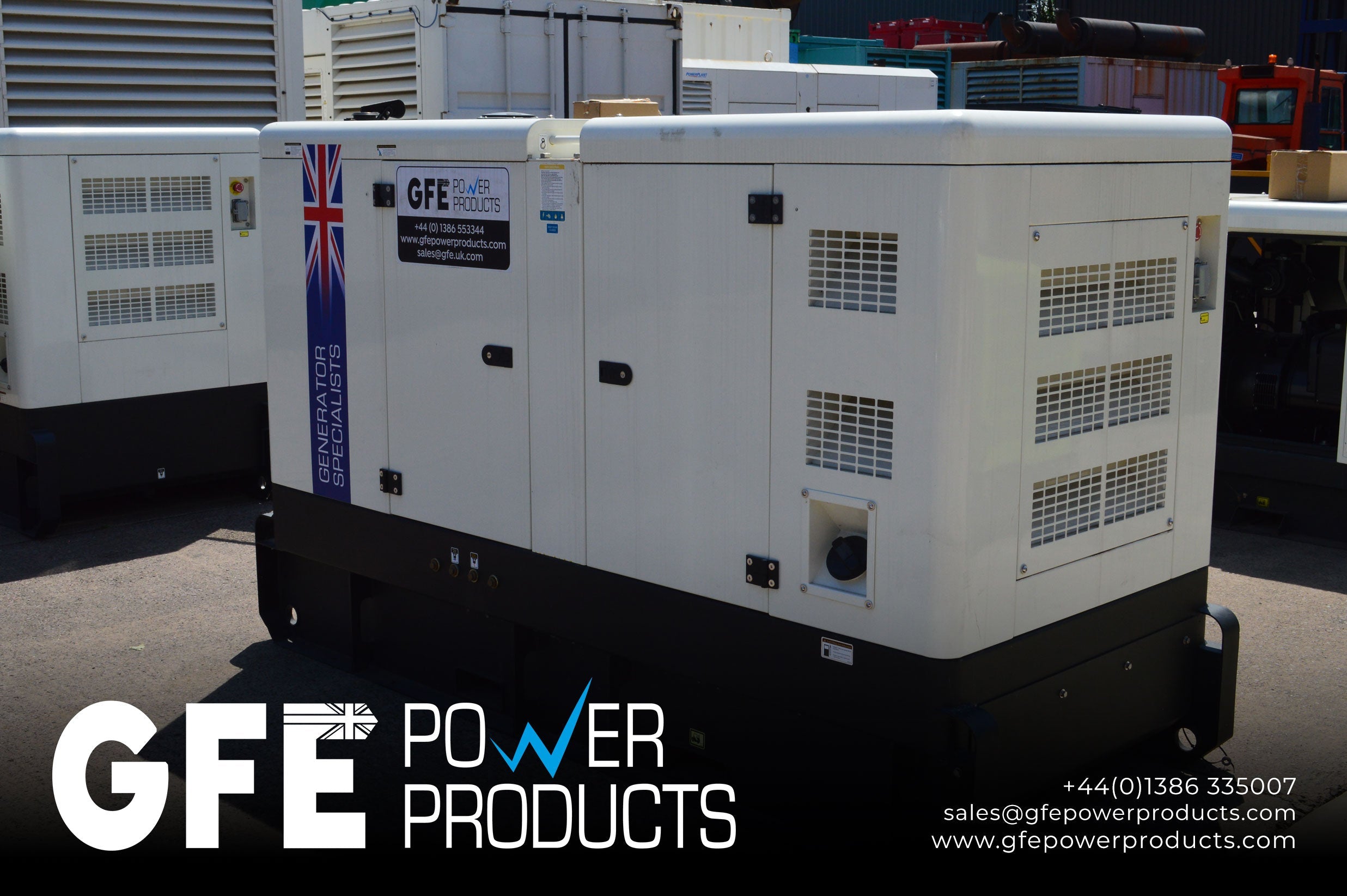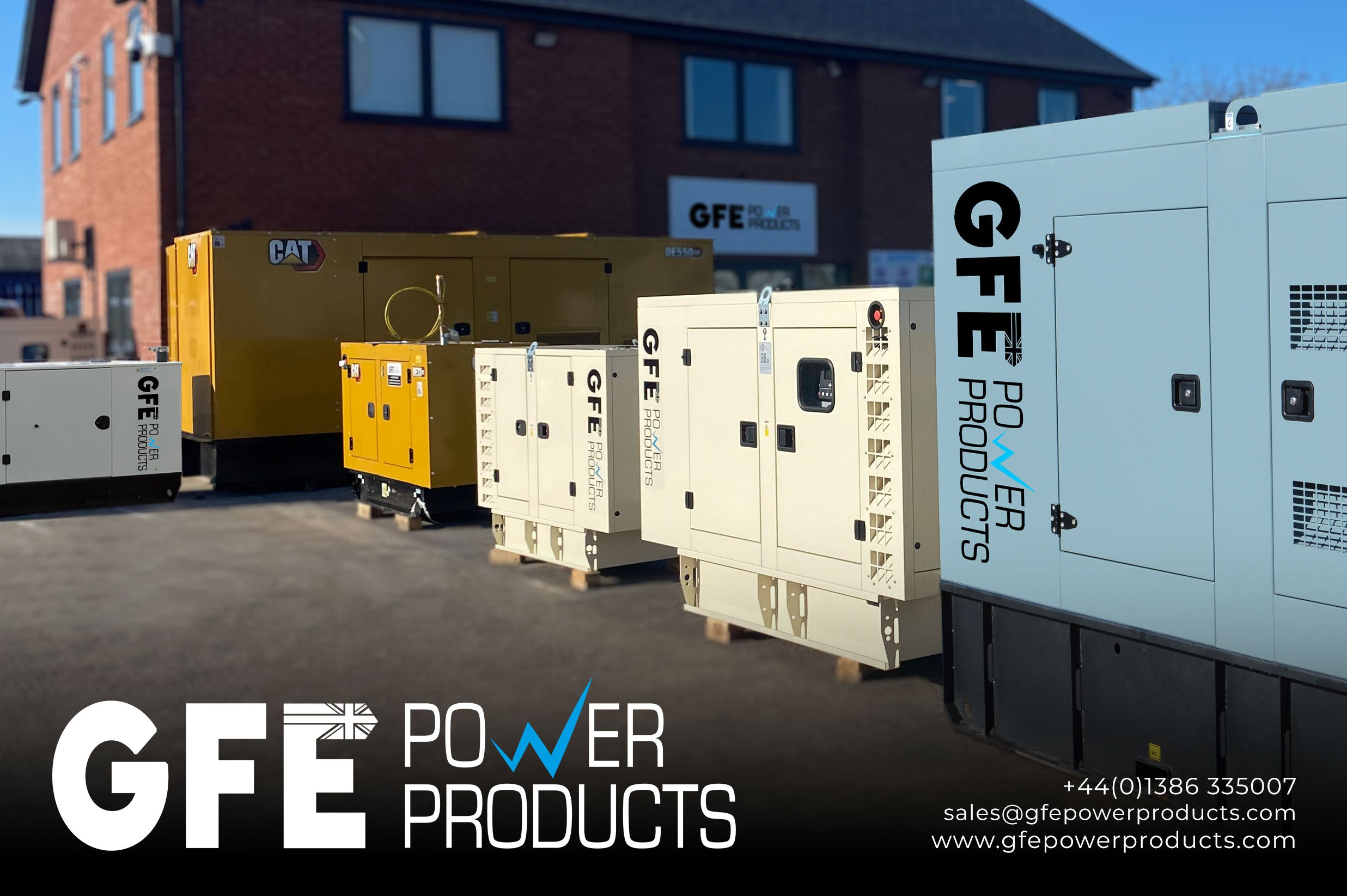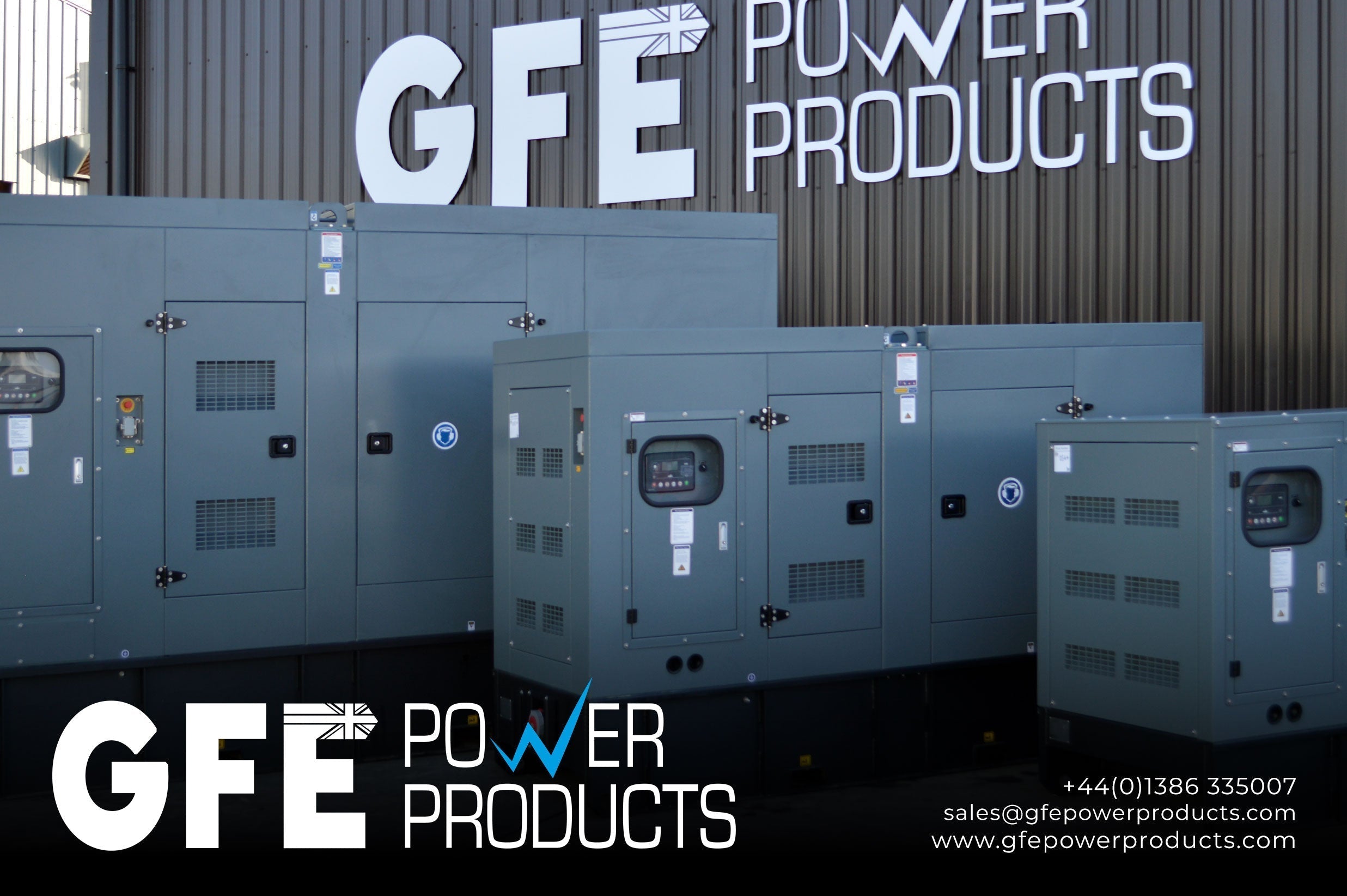
What is kVA? A Simple Guide from GFE Power Products
When you're browsing for a diesel generator, one of the first specifications you'll come across is kVA. But what exactly does this term mean? And why is it so important when choosing a generator for your home, business, or industrial site?
At GFE Power Products, we supply high-performance new diesel generators across a wide range of power ratings. In this blog post, we’re breaking down what kVA means, how it’s calculated, and how it affects your generator’s performance. Whether you're new to generators or just want to better understand the technical side of power systems, this guide is for you.
What Does kVA Stand For?
kVA stands for kilovolt-amperes. It’s a unit of apparent power used to describe the total power output capability of a generator.
To break it down:
- “k” means kilo, or 1,000
- “V” stands for volts
- “A” stands for amperes (amps)
So, 1 kVA = 1,000 volt-amperes.
It’s a way to describe how much electricity a generator can supply, taking both voltage and current into account. But here’s the catch: not all of that power is usable. That’s where power factor comes into play.
kVA vs kW: What’s the Difference?
One of the most common questions we get at GFE Power Products is: “What’s the difference between kVA and kW?”
- kVA (kilovolt-amperes) refers to apparent power
- kW (kilowatts) refers to real power, or the usable energy your devices actually consume
The difference between the two depends on power factor, which is typically expressed as a decimal (e.g., 0.8).
Here’s the simple formula:
kW = kVA × Power Factor
Most diesel generators are rated at a power factor of 0.8, which means:
A 100 kVA generator can deliver 80 kW of usable power
Want to dive deeper into this topic? Check out our full article: Why Power Factor Matters.
Why kVA Matters When Buying a Generator
When sizing a generator, understanding kVA is essential. It helps determine whether the generator can handle the load you intend to run.
For example:
- A 20 kVA diesel generator is suitable for small businesses or homes with moderate power needs.
- A 1000 kVA industrial generator can power a large commercial site, hospital, or data centre.
At GFE Power Products, we offer generators in a wide range of kVA ratings to suit everything from residential backup to full-scale industrial power solutions. And because all our units are new and built for reliability, you can trust that you’re getting dependable performance with every product.
How Do You Know What kVA You Need?
Choosing the right kVA depends on several factors:
- What equipment you need to power
- The total running load
- Starting (inrush) current for motors or compressors
- Whether you’re using single-phase or three-phase power
As a general rule, always size slightly above your expected load to allow for unexpected spikes or future expansion. Under sizing a generator can lead to inefficiency, overload, and equipment damage.
Need help calculating your exact requirements? Our experienced team is here to guide you.
Single-Phase vs Three-Phase: How kVA Differs
The type of electrical phase also impacts how kVA is used. In the UK, single-phase power is common in residential settings, while three-phase is standard for commercial and industrial applications.
- Single-phase generators typically range from 5 kVA to 30 kVA
- Three-phase generators can go from 30 kVA to 2500+ kVA
If you’re unsure which one you need, we cover this in more detail here: Single-Phase vs Three-Phase: What’s the Difference?
Real-World Example: Understanding Load vs Generator Size
Let’s say your facility requires:
- A 50 kW heater
- A 10 kW lighting system
- A 20 kW HVAC system
Your total real power demand is 80 kW.
Assuming a power factor of 0.8:
You’d need a generator rated at 100 kVA (because 100 × 0.8 = 80 kW)
But what if you’re starting a large motor? You’ll need to factor in the startup load, which can be several times higher than the running load. That’s why consulting a generator expert can make a big difference.
Can You Convert kVA to Amps?
Yes! If you want to know how many amps a generator produces, use this formula:
- For three-phase:
- Amps = (kVA × 1000) / (√3 × Volts)
- Amps = (kVA × 1000) / (√3 × Volts)
- For single-phase:
- Amps = (kVA × 1000) / Volts
- Amps = (kVA × 1000) / Volts
- Let’s say you have a 100 kVA, 400V, three-phase generator:
- Amps = (100 × 1000) / (1.732 × 400) ≈ 144.3 amps
- Amps = (100 × 1000) / (1.732 × 400) ≈ 144.3 amps
Knowing this is useful for planning your electrical distribution system and ensuring your cables and breakers are properly rated.
Why Choose GFE Power Products?
At GFE Power Products, we specialise in supplying new, high-quality diesel generators built to meet UK and international standards. Whether you're powering a construction site, a factory, a remote facility, or a critical infrastructure setup, we’ll help you find the right generator for your needs- in the right kVA rating.
We also offer expert support to help you understand technical terms like kVA, kW, and power factor, so you can buy with confidence.
Understanding what you need
Understanding kVA is essential for choosing the right generator. It’s not just a number on a spec sheet- it directly affects how much power you’ll get and how efficiently your system will run.
If you're ready to explore our full range of diesel generators, or if you’d like help selecting the right kVA rating, get in touch with our team. We’re always happy to offer honest advice backed by real industry experience.
And don’t forget to read our other generator insights:
Single-Phase and 3-Phase: What’s the Difference?
Why Power Factor Matters
Looking for a new diesel generator?
Visit GFE Power Products to browse our range of diesel generators, or speak to our sales team today for tailored recommendations.
Phone: +44 (0)1386 335007
Email: sales@gfepowerproducts.com



